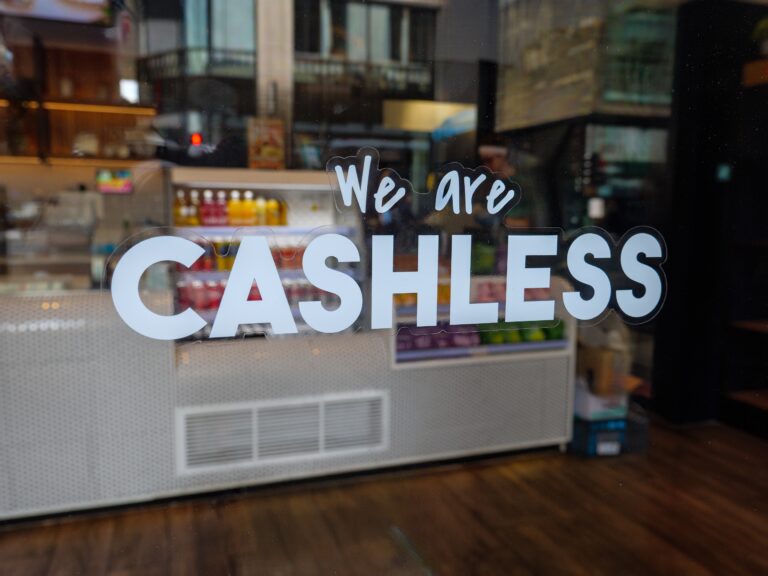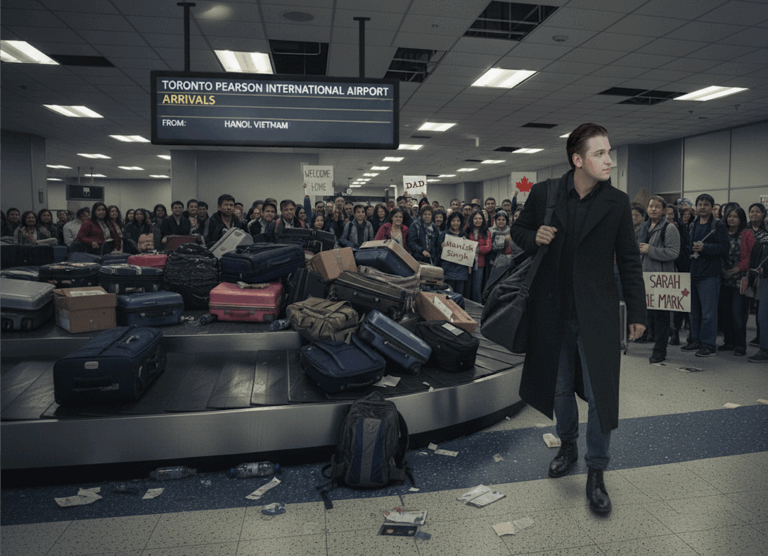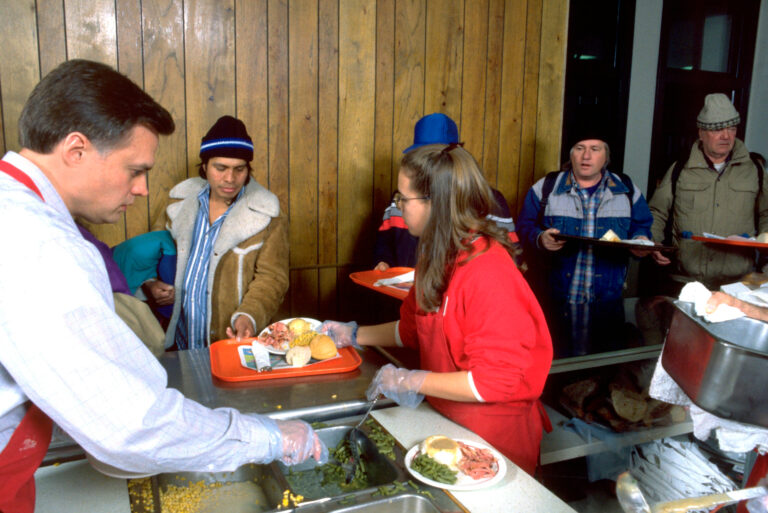On Tuesday Statistics Canada reported that Canada’s population leapt by 430,635 people from July through September of this year, after previously reporting that our nation added 1,050,110 people in 2022. That was the largest such annual number ever recorded and the nation’s highest percentage growth rate since 1957. The ostensibly non-political federal agency proclaimed this result as “certainly cause for celebration.” Ninety-six percent of the growth came from international migration. People accepted as new permanent residents accounted for 437,000 of those immigrants, while 613,000 were classified as non-permanent. In November, the federal government announced plans to grant permanent residency to 465,000 this year, with a goal of half a million by 2025. Combined with a high rate of non-permanent arrivals – such as students and temporary foreign workers – this means Canada will continue to have by far the highest immigration rate of any G7 country.
The Justin Trudeau government says we need all those immigrants to make up for a chronic shortage of skilled workers. Permanent immigrants fall into four broad acceptance categories: economic (and, thus, presumably skilled), family reunification, refugees and protected persons, and a final category described as “humanitarian, compassionate and others.” Economic immigrants make up about 60 percent of the total.

But before one jumps to the conclusion that our immigration system is working as it should, providing Canadian companies large and small from coast to coast with the skilled employees they would otherwise lack, one must pose this question: how many of those skilled immigrants are simply being added to the already massive number of federal, provincial and municipal government employees? The answer to that question is alarming.
A study by the Fraser Institute, released one month ago, with the revealing title Government-sector job growth dwarfs private-sector job growth across Canada, found that governments added far more employees than the private sector in all ten provinces between February 2020 and June 2023 – a period spanning from just before the pandemic set in, across the hard times of Covid-19, and onward for a year after it faded. During this time, the number of government jobs increasing by 11.8 percent compared to just 3.3 percent in the private sector – a whopping total of 446,000 government bureaucrats added.
There’s no doubt that immigrants are needed to help fill shortages of workers in some categories and certain regions. But more than 1 million per year? Of whom tens if not hundreds of thousands have probably ended up on the public payroll, i.e., going straight to being consumers of public resources rather than ever being productive contributors.
Canada’s immigration policy should be (but isn’t) considering two stark realities: a serious housing shortage/price crunch and a disintegrating health care system. Both situations – it’s no exaggeration to call them crises – are getting worse every day. While some housing markets are plagued by chronically slow construction, a lack of home building isn’t the main culprit. Last year actually saw a new national record set for housing starts at 320,000 units. Yet even that is far less than what’s needed to house our surging population.
As bad as Canada’s housing situation is, health care is even worse – and deteriorating rapidly. A bulletin two weeks ago from public policy think-tank Second Street reported that more than 17,000 Canadians died while waiting for surgery or diagnostic scans in a one-year period straddling 2022-2023.
Further, Canada’s population has been increasing by 600,000 or more every year for the past five years, while housing starts are typically far lower than the 2022 record – meaning we are falling ever-farther behind on housing. The Trudeau government’s much-boasted-about Housing Accelerator Fund has been a dismal failure. A recent article in Policy Magazine noted that Canada faces a housing shortfall of 3-4 million units by 2030. While high interest rates, zoning and NIMBYism are all playing roles, the article warns: “Historically high immigration levels will push up demand and drive up housing prices and rental rates across the country.”
While this seems to have all escaped the notice of Trudeau, even some of Canada’s elite are starting to catch on. Last week Tiff Macklem, the hapless Bank of Canada governor whose dithering helped heighten Canada’s pandemic-induced inflation to crisis levels, noted in a speech at Toronto’s Royal York Hotel that, “Canada’s housing supply has not kept up with growth in our population, and higher rates of immigration are widening the gap.”
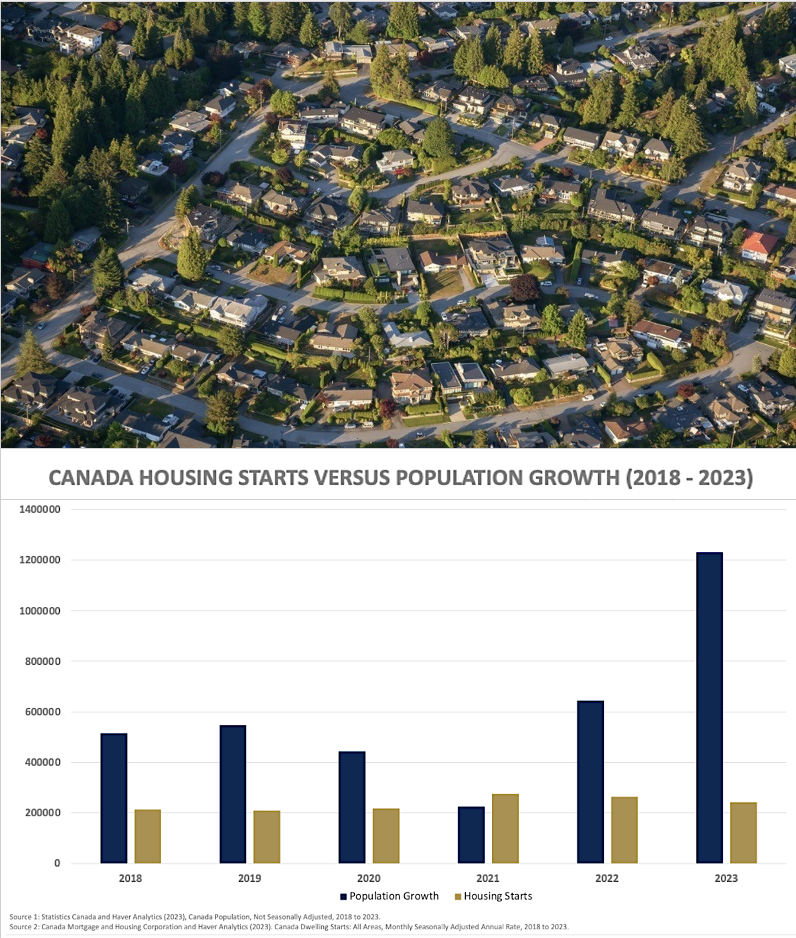
As bad as Canada’s housing situation is, health care is even worse – and deteriorating rapidly. A bulletin two weeks ago from public policy think-tank Second Street reported that more than 17,000 Canadians died while waiting for surgery or diagnostic scans in a one-year period straddling 2022-2023. Second Street’s figure is based on a series of Freedom of Information requests. It was an increase of 64 percent since 2018 and a five-year high.
Because many provincial health authorities provide incomplete data, Second Street believes the true figure is actually much worse: nearly 31,400 preventable deaths. The deceased victims had waited as long as 11 years for treatment. These horrific results are further evidence that Canada’s healthcare system is failing even to tread water and can be described as disintegrating or even collapsing. The situation is quite literally deadly. “We’re seeing governments leave patients for dead,” says Second Street’s president, Colin Craig.
And yet, incomprehensibly, the Trudeau government decided 2022 was the time to bring in nearly 1.1 million newcomers, and vowed to continue immigration flows at similar rates for years. And, as I pointed out near the end of this recent article, the published immigration figure is on top of 550,000 student visas and 600,000 work permits for temporary foreign and “international mobility” workers. Many of these workers are semi-skilled or completely unskilled and go straight to work in fast food or other low-paid services. How could any sane government follow such a foreseeably disastrous path?

During my long career in the energy sector, our company faced numerous existential challenges (not least how to survive the disastrous “Trudeau Number One’s” National Energy Program). I realized that two essential and entwined priorities were to do whatever it took to retain our highly proficient employees while also reining in expenditures as much possible – keeping the company both solvent and capable. We also developed a priority list for increasing capital expenditures to resume growing when conditions improved (much of which had to do with getting rid of Trudeau Number One). In such a situation, continuing to hire and spend would have been a path to certain disaster.
Sadly for our benighted country, the Trudeau government has done exactly that, following a path that has brought us to the brink of national disaster in several critical areas at once. Now, our unprecedented housing crisis has resulted in even job-holding and fully functional Canadians camping long-term in vehicles and tents. Fellow citizens are suffering and dying on health care waiting lists while being forbidden to access private care by federal legislation (and some provincial policies), with Canada’s courts often siding with government when challenged. And yet the Trudeau government has reconfirmed an immigration goal of half a million permanent residents with no lessening of non-resident immigrants that together will add another 1 million-plus newcomers in 2024.
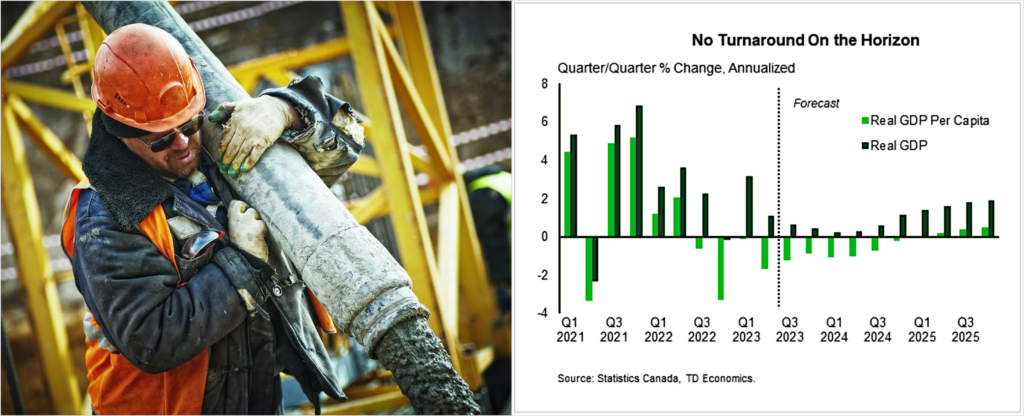
It’s hard to comprehend how much worse Canada’s housing and health care crises will get under these toxic policies. But they most assuredly will.
Adding to these self-inflicted wounds, our country now faces economic stagnation. While Canada’s aggregate (or “headline”) gross domestic product (GDP) has continued to increase, though weakly, the metric that really counts – GDP per individual Canadian – has stalled. Per capita GDP is critical because it is closely tied to individual income; to over-simplify slightly, workers can’t earn more if they don’t produce more. And here the situation is dire. “Real GDP per capita has contracted over the last three quarters,” states a July 15 report from TD Economics. “Longer term, the OECD projects that Canada will rank dead last amongst OECD members in real GDP per capita. Without fundamental changes, Canada’s standard-of-living challenges will persist well into the future.”
Millions of hopeful immigrants entering Canada will find a country not only unable to provide health care and housing for its citizens and temporary residents, but also with a diminishing overall standard of living.
The key to producing more (without simply working more hours) and, hence, to earning more, is to increase the productivity of workers. And that is driven by private-sector capital investment in buildings/infrastructure, machinery/equipment, processes, software and other “intellectual capital,” research-and-development, and anything else that allows workers to increase their output without working more hours. Part of that increased output can be returned to workers in the form of higher compensation. That is how “real” wages grow without spurring inflation.
And in this critical dynamic, Canada has been lagging the U.S. and even Europe for over 20 years. Today our GDP per hour worked is stalled out and may actually be regressing. The TD Economics report cited above forecasts that this key metric will continue to experience “persistent contractions” at least throughout 2024. Meaning Canada’s shortfall in productivity – and personal income – versus the U.S. and leading European countries will continue to increase.
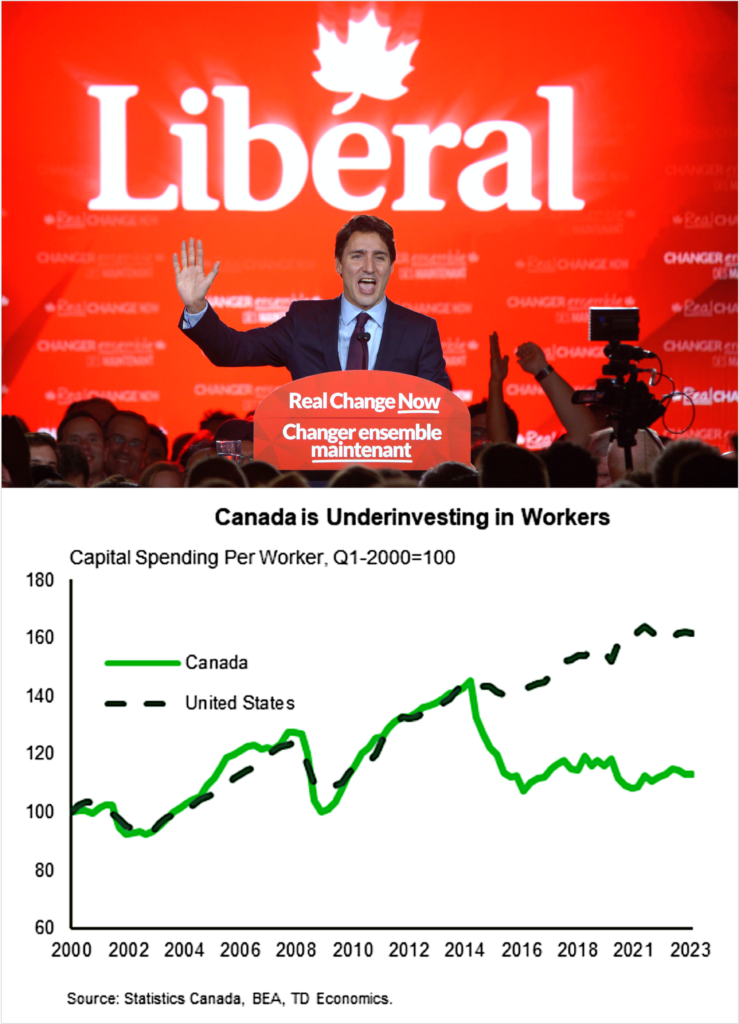
A report last year from the CD Howe Institute, Decapitalization: Weak Business Investment Threatens Canadian Prosperity, points out that the invested capital per worker, key to a country’s ability to produce goods and services, “has been weak since 2015” – the year the Trudeau government came into office. “Before 2015, Canadian business had been closing a long-standing gap with the U.S.,” the report states, before warning, “Since 2015, the gap has become a chasm.” The report’s ominous conclusion: “Having investment per worker much lower in Canada than abroad tells us that businesses see less opportunity in Canada and prefigures weaker earnings and living standards.”
The stark reality is that those millions of hopeful immigrants entering Canada will find a country not only unable to provide health care and housing for its citizens and temporary residents, but also with a diminishing overall standard of living. And a national government that doesn’t seem to care.
Gwyn Morgan is a retired business leader who was a director of five global corporations.
